Blair Castle: Feudal power, sophisticated patronage, rebellion and romance
Reinvented several times, this ducal seat reveals to Mary Miers the story behind the Rococo palace in the wilds. Photographs by Simon Jauncey.
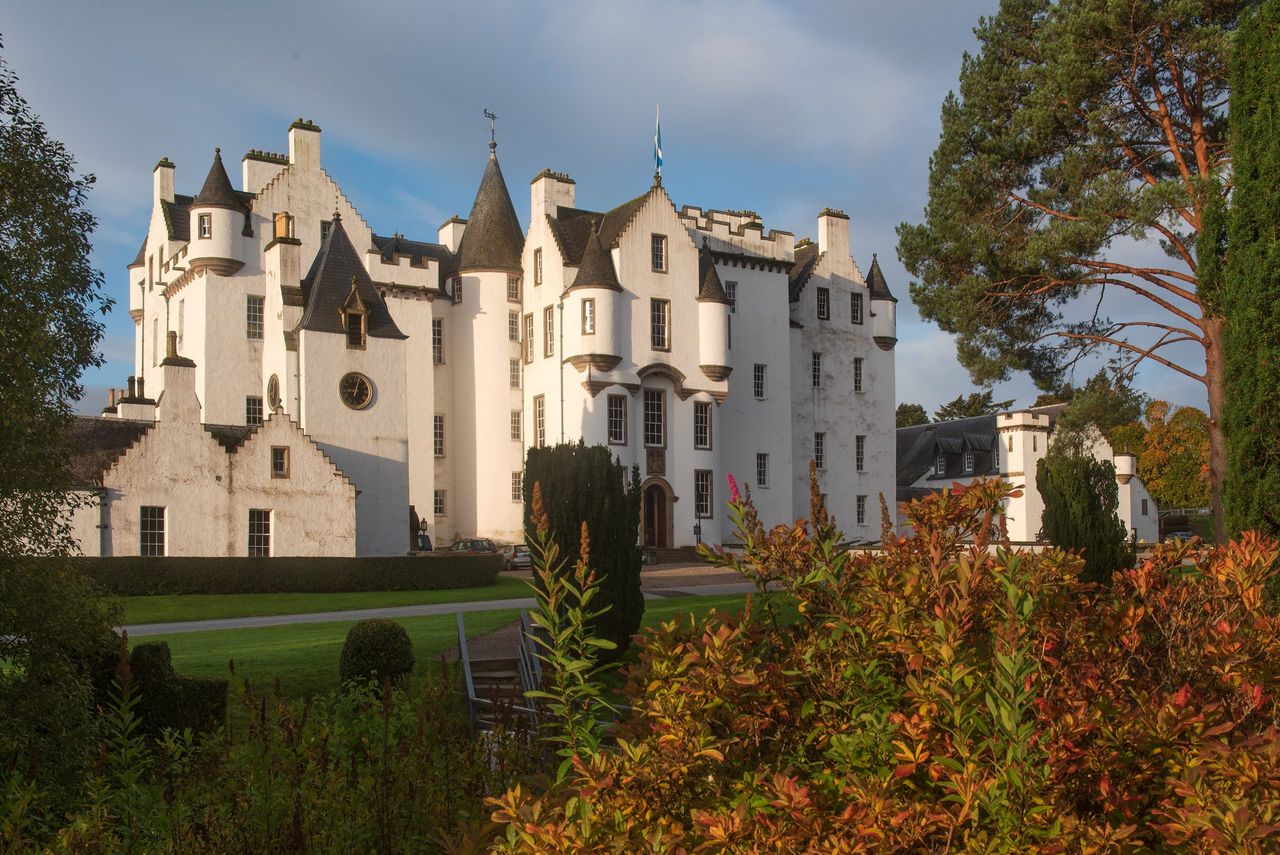

Blair Castle is an unmissable landmark on the main route to the Highlands. A vision of brilliant white against the greens and russets of its parkland, it stands on the north side of the River Garry encircled by wooded hills, beyond which stretch the vast and treeless wilds of the ancient deer forest of Atholl.
The flourish of pepperpots, crowsteps and crenellated towers is deceptive, for this is a castle re-created. The Baronial detail belongs to David Bryce’s Victorian remodelling, yet the main range has Georgian sash windows and its walls are clearly older. The long, low south wing suggests 19th-century domestic offices, but things are never quite what they seem at Blair. Behind the uniform white harl lies a building with a history as complex and dramatic as that of the earls, marquesses and dukes of Atholl, who have been connected to the area since the 12th century.
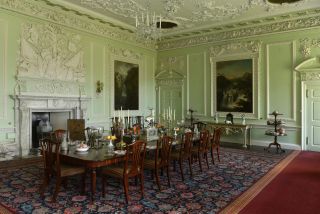
The earliest part of the castle is named after Sir John Comyn (or Cumming), lord of Badenoch, who trespassed onto the territory of the Pictish earldom and, by 1269, had erected a small stone tower. The property was later returned, but, following the Wars of Independence, it came into royal ownership. The first in the present line was Sir John Stewart of Balvenie, half brother of James II, who was granted the earldom in 1457.
In about 1529, the year in which the 3rd Earl staged a great deer drive in honour of James V, whom he entertained in a ‘hunting sete’ of woven birch hung with tapestries, he raised the tower to five storeys and built a three-storey hall range. In 1595, the earldom reverted to the Crown, but was revived in 1629 in favour of John Murray of Tullibardine, a descendant through the female line. The first of the Murray Earls of Atholl, John built a stair tower in the angle between Cumming’s Tower and the hall and began an extension, but the Civil War intervened and work was abandoned.
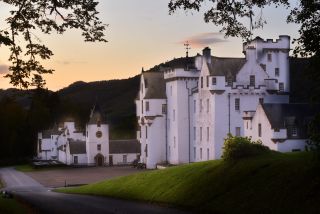
The castle’s strategic position made it vulnerable to military occupation – notably, from 1652 to 1660, when Cromwell’s troops were stationed here, and four times during the Jacobite uprisings of 1689, 1715 and 1745. Royalist support was rewarded after the Restoration with increasingly powerful office, culminating with the 2nd Earl’s appointment as Keeper of the Privy Seal and, in 1676, his elevation to Marquess. In 1689, he swore allegiance to the Protestant crown and, soon after he died in 1703, his son was made a Duke.
The Murrays of Atholl were nothing if not wavering in their loyalties; during these turbulent years, there were arrests and accusations of treachery. They were one of the four ducal factions in the contentious politics of the Union, the 1st Duke’s stance on which lost him his job.
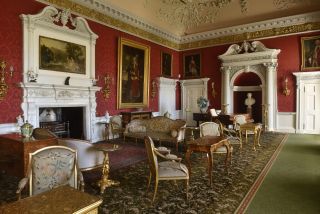
Nevertheless, in 1715, he supported George I and made the castle ready for defence against the rebellious Earl of Mar. Of his 20 children, three sons were Jaco-bites, involved in the failed uprising, so it was James, the second surviving son (1690–1764), who succeeded him in 1724.
Sign up for the Country Life Newsletter
Exquisite houses, the beauty of Nature, and how to get the most from your life, straight to your inbox.
Ramshackle and bashed about by soldiers, the castle then was still partly unfinished, as drawings of 1736 attest. Indeed, in about 1676, the 1st Marquess had commissioned William Bruce to design a large, plain house in ‘a warm winter situation’ at Dunkeld and this served as the principal residence.
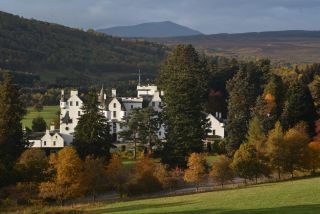
The Marquess’s marriage in 1659 to Lady Amelia Stanley, daughter of the 7th Earl of Derby, had not only helped to boost his Royalist credentials, but would also greatly enrich their descendants. She was heir to the sovereignty of the Isle of Man, which would come into the Murray family with substantial revenues on the death of her nephew in 1736.
That year, Duke James commissioned John Douglas to draw up the reconstruction of Blair as a grand Palladian building, planned, as most Scottish country houses still were at this date, with a state apartment – a ceremonial sequence of rooms theoretically for entertaining royalty – as well as a family one. A similar, but more economical, scheme by the mason-architect James Winter followed in 1743, but neither was executed.
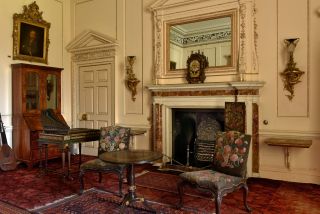
Instead, in 1743, works began on a great new house on lower ground to the south, but, when the ’Forty Five intervened two years later, only the shell of the ducal wing was built. (It would be fitted out in 1747–48, at about the time it was linked to the castle as its south range by a short wing housing the family dining room, the duke’s dressing room and bedchamber, remodelled in 1815 after a fire.)
Bonnie Prince Charlie stayed at Blair on his way south in August 1745 and again in February 1746. When, in March, the Duke’s brother, the Jacobite commander Lord George Murray, arrived to find a garrison of red coats, he blockaded the castle and his soldiers fired cannon balls through the roof. He was then summoned north to Inverness with news that the Duke of Cumberland was approaching and this last siege on British soil was aborted. (His son, John, would reunite the family when he married his cousin and became the 3rd Duke.)
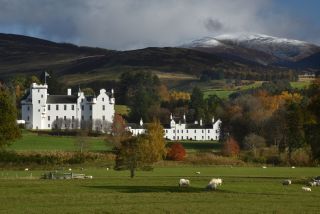
That September, intending to deflect further military occupation and to complete his fashionable new house, Duke James ‘Took the Resolution to take down the castle of Blair’. By 1748, he had changed his mind and begun work on a more modest version of the earlier schemes for the castle, involving ‘clipping’ its towers and turrets to create a plain Georgian edifice of uniform height.
Somewhat ironically, Atholl House, as the emasculated building was now renamed, had a barrack-like air; from a distance, Joseph Mitchell observed, it resembled a large factory. However, the utilitarian nature of Douglas and Winter’s restructuring belied the richness within.
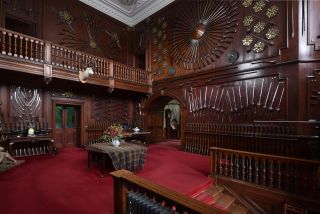
Between 1748 and 1758, leading craftsmen transformed the main range into one of the most impressive Rococo ensembles in Scotland. Fully documented in bills and letters, the fitting out included joinery designed by the London specialist Abraham Swan, plasterwork by the brilliant Edinburgh stuccoist Thomas Clayton and fine marble chimneypieces supplied by Thomas Carter, the London stone carver who had trained Roubiliac. Even as Blair was garrisoned, Duke James was ordering furniture in the latest taste and the collection that survives at the castle is of unrivalled significance.
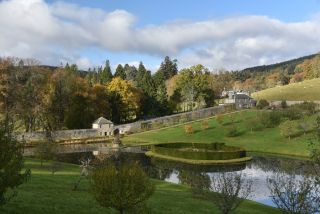
The plan provided two principal suites, with the great rooms occupying two-thirds of the main block. For all the grandeur of the main staircase, nothing prepares the visitor for the stuccoed splendour of the dining room on the first floor, entered through a doorway of breathtaking pomp (Visual Arts, page 106). The exuberant plasterwork, which was executed by Clayton in 1751–53, reaches a crescendo with the explosion of trophies over the chimneypiece. Amid all the swagger, Charles Steuart’s landscapes of local scenes (1766–78) reflect the new Picturesque appreciation of the Highlands.
The great drawing room on the second floor, created in 1754–58, represents the highpoint of the Duke’s aspirations (Fig 2). The room is almost a double cube, with a coved ceiling enriched by Clayton and walls hung with crimson Genoa damask to set off the white architectural elements and gilt furnishings.
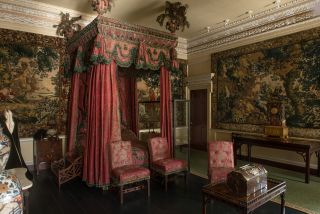
As at Hopetoun and Newhailes, it was originally conceived as the ‘high dineing room’, traditionally the architectural climax of the state apartment. The change reflects the move to smaller dining rooms and the rising status of the Georgian drawing room. The modified processional route turned back on itself, rather than parading through the main rooms to culminate in the state bedchamber. In the executed scheme, the state bedchamber was located off to the north, in the old tower.
The reconstruction of Blair as a magnificent Georgian mansion, with the grandest rooms conceived as a statement of the Duke’s own wealth and prestige, reflected a shift in the nobility’s self-image and relationship to the Crown. A measure of this ducal pride is apparent in the private, or Picture Staircase (1748–50), an amazingly grand space with its gallery of Atholl portraits framed by Clayton’s trophy festoons. It linked the two parts of the family apartment, which were located partly in the lower south ranges and partly in the formerly unfinished end of the castle.
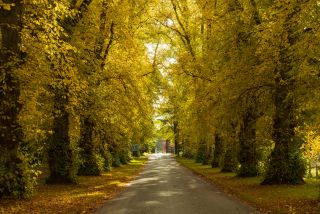
The creation of a Rococo palace in this wild and warring terrain is astounding. Even Sir John Clerk of Penicuik, that champion of raw Nature, couldn’t help remarking in 1739 that ‘all along from the Blair… I cou’d see nothing but a barbarous tract of mountains on both hands and scarce a stalk of grass’. By the 1770s, Picturesque tourism had reached Blair Atholl, but scenes such as David Allan’s famous A Highland Wedding at Blair Atholl (1780) romanticised the reality; as many visitors observed, the region was still largely poverty stricken, inaccessible and rough.
In the 1730s, Duke James began to buy in the leases of surrounding farms with a view to landscaping on a grand scale. His earlier schemes were in the French style favoured by his father – a plan of 1744 by Thomas Winter shows a geometrical design with radiating avenues, vistas and the wilderness of Diana’s Grove, first planted in 1737. He was also a pioneer of Picturesque gardening in the wilds: while other milords were buying up antiquities on the Grand Tour, he was creating walks up the rugged gorges of the Tilt. His nine-acre Hercules Garden, made between 1747 and 1760, fashionably combined practical planting with pleasure grounds featuring ornamental ponds, thatched houses for waterfowl, a summerhouse and Cheere statues.
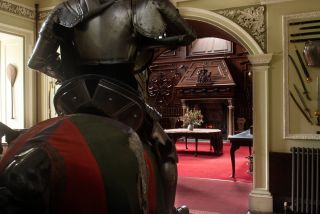
In the 1750s, he introduced elements of Chinoiserie, at the same time as making the parkland less formal. He also established the first larch plantation and bred the passion for forestry that, over the next 170 years, would transform the Atholl estates.
The 4th Duke, who was a keen sportsman and agricultural improver, added more than 15 million trees to his 350,000 acres. Luckily for Blair Castle, his flirtation with the Gothic Revival was confined to Dunkeld, where he commissioned Thomas Hopper to replace the Bruce house with a ‘Gothick palace’, begun in 1828, but abandoned unfinished in 1830.
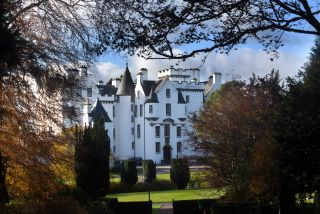
When Victoria and Albert holidayed at Blair in 1844, it was not the house – ‘very curious…[with] one very fine large room’ – or its dazzling contents that intoxicated the Queen, but the scenery – ‘bold, wild, grand & desolate,’ she rhapsodised in her journal. Within a decade, they had built their new castle on Deeside and popularised the Baronial revival. Balmoral also lent kudos to the Victorian fashion for Highland sporting estates, which saw almost every big house in the north entertaining large parties for the Highland Season. As early as 1825, Marshall Macdonald was describing Blair as the Duke of Atholl’s hunting lodge ‘white as snow’; the 7th Duke’s remodelling of 1869–72 provided extra accommodation for his shooting guests, as well as celebrating, through its recastellated form, the ancient lineage and turbulent history of the Atholls that was now considered the epitome of romance.
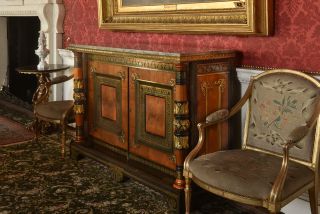
Contrary to what might be expected of a Scotch Baronial makeover, Bryce’s refashioning involved the subtlest decoration. This owed much to the house-painter Thomas Bonnar Jr, whose expert know-ledge of colour theory and skills of graining and other effects wrought a gentle patination that harmonised the different elements and enhanced the atmosphere without detracting from the Georgian work.
Only the entrance hall was re-cast – rebuilt as part of a twin-bartizaned tower and fitted out as a neo-Jacobean armoury. In 1877, D. & J. Bryce added that requisite of the big house geared to entertaining during the Highland Season – a rustic dancehall known as the Ballroom.
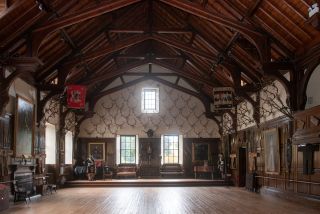
By the 1930s, the estate was bankrupt and the future looked bleak. A reprieve came through the fortune of the Pearson family, when Annie, Viscountess Cowdray, whose granddaughter Angela was engaged to the Duke’s distant cousin and heir, bought the estate in 1932 and set it up as a company. In 1936, Blair became the first Scottish house to open full time to the public.
Angela, whose husband died before he could inherit, moved into the castle in 1945 and, with her son Iain, the future 10th Duke, developed Blair as a visitor attraction and carried out wide-ranging works to reverse wartime decline. In 1966, the Duke revived the Atholl Highlanders, the unique private army that had been created when Queen Victoria granted her Athollmen bodyguards the right to bear arms.
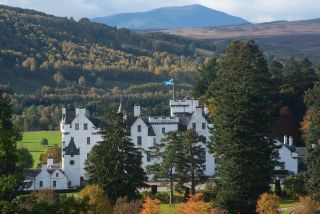
After the 10th Duke’s death in 1996 (when a South African cousin inherited the title), his half-sister, Sarah Troughton, took over the estate as senior trustee of the Blair Charitable Trust and has managed many improvements, notably the restoration of the Hercules Garden. Her husband, architect Jamie Troughton, has added a contemporary layer to this complex and intriguing building, with the Banvie Hall and other additions in an unobtrusive Modernist style.
To find out more about Blair Castle, visit www.blair-castle.co.uk
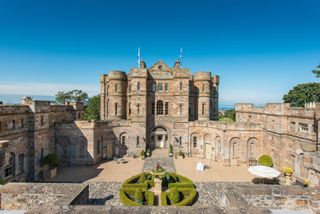
Scotland's most expensive private house comes up for sale for the second time since 1796
Seton Castle's history is a fascinating mix of ups and downs as Penny Churchill explains.
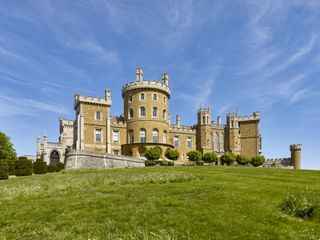
Belvoir Castle: From Norman conquest to Regency prodigy
New discoveries in the archives at Belvoir are fleshing out the history of this outstanding castle. John Goodall delves into

Ogston Hall: A romantic, well-maintained family home, diligently researched and preserved
The characterful re-working of an ancient family house in the 1850s integrated its varied elements into an impressive and coherent

Hambleton Hall, a magical country house hotel in Rutland
Looking for beautiful country house hotel to spend a couple of days relaxing? Hambleton Hall is the answer
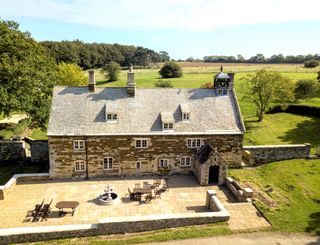
Credit: Belvoir Estate
Croxton Park House: A weekend getaway in a house decorated by a Duchess
Mary Miers is a hugely experienced writer on art and architecture, and a former Fine Arts Editor of Country Life. Mary joined the team after running Scotland’s Buildings at Risk Register. She lived in 15 different homes across several countries while she was growing up, and for a while commuted to London from Scotland each week. She is also the author of seven books.
-
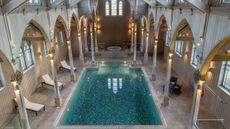 If heaven is on earth, it might be in this home with a converted chapel that is now a swimming pool
If heaven is on earth, it might be in this home with a converted chapel that is now a swimming pool5 Wood Barton Town House is part of an exclusive 80-acre development in Devon that also comes with fishing rights on the River Avon and four bedrooms.
By James Fisher Published
-
 An Italian-inspired recipe for lemon-butter pasta shells with spring greens, ricotta and pangrattato
An Italian-inspired recipe for lemon-butter pasta shells with spring greens, ricotta and pangrattatoSpring greens are just about to come into their own, so our Kitchen Garden columnist reveals exactly what to do with them.
By Melanie Johnson Published
